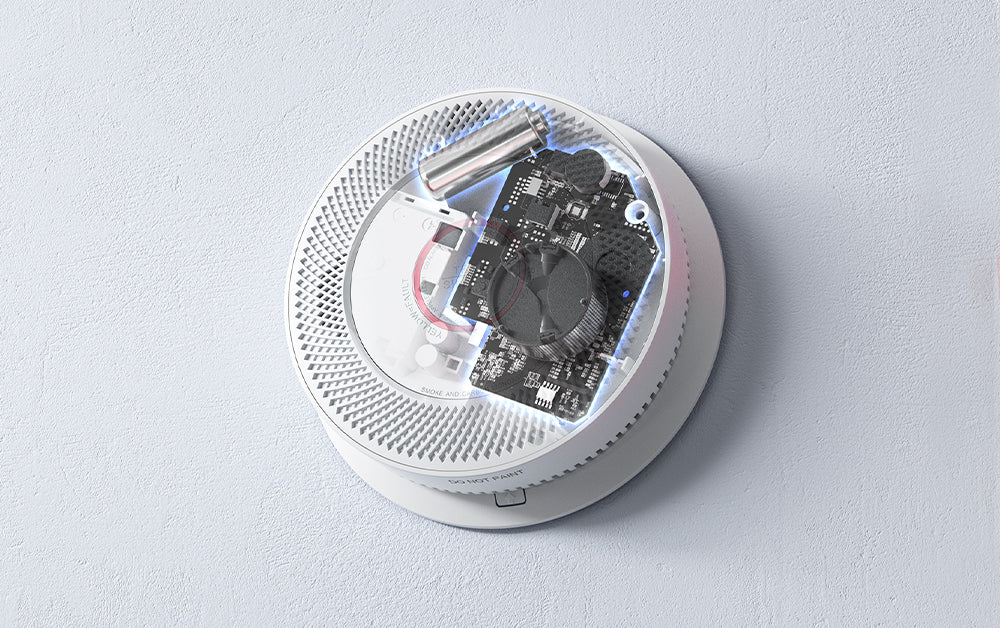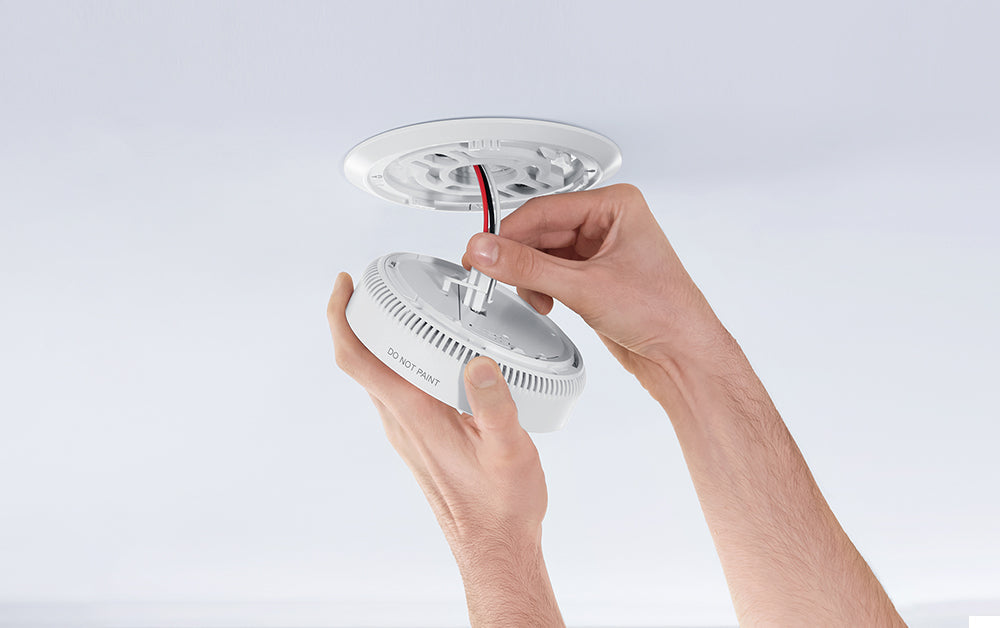When it comes to protecting your home and your loved ones, few tools are more essential than a reliable smoke detector. Not all the smoke detectors work the same way, and understanding the technology behind them can help you make the safest choice for your family. This article explains the differences between photoelectric and ionization smoke detectors and why photoelectric detectors are often recommended for home use.
How Smoke Detectors Work
According to the National Fire Protection Association (NFPA), three out of five home fire deaths occur in properties without working smoke alarms.
Smoke detectors use one of two main technologies: photoelectric or ionization.
1. Technology Behind Photoelectric Smoke Detectors
Photoelectric detectors use a light beam and a sensor. When smoke particles enter the sensing chamber, they scatter the light, triggering the alarm. Ket benefits:
- Highly responsive to smoldering, slow-burning fires (like a cigarette burning on a couch or electrical faults behind walls)
- Less likely to trigger false alarms from cooking or steam
- Ideal for bedrooms, hallways, and living rooms
2. Technology Behind Ionization Smoke Detectors
Ionization detectors contain a small amount of radioactive material that ionizes the air inside a chamber. Smoke disrupts this flow, setting off the alarm. Key points:
- More responsive to fast-flaming fires (like grease fires or paper ignition)
- Can be triggered by steam or cooking smoke. leading to higher false alarms
- Commonly used in homes and commercial areas alike, particularly in garages, utility rooms, or other spaces with higher fire ignition risks
- Lower cost and widely available, often used as supplemental protection
Each type has advantages, and both can be triggered by non-fire sources under the right conditions.

Side-by-Side Comparison
| Feature | Photoelectric Detectors | Ionization Detectors |
| Fire Type Sensitivity | Smoldering fires (slow) | Flaming fires (fast) |
| False Alarm Rate | Relatively lower (less sensitivity to steam and cooking fumes) | Relatively higher (more prone to false alarms from steam, cooking) |
| Cost | Slightly higher | Generally lower, practical for supplemental coverage |
| Availability | Increasingly common | Widely available |
| Ideal Placement | Ideal for residential use: bedrooms, living areas, hallways | Commonly used in homes and commercial areas alike, particularly in garages, utility rooms, or other spaces with higher fire ignition risks |
| Maintenance Needs | Lower maintenance. Less affected by dust and air currents | Needs regular cleaning. More sensitive to dust, drafts |
| Installation Type | Common in standalone or smart battery-operated models |
Often wired in older buildings. Special smart-compatible options |
| Environmental Impact | No radioactive materials. Safer for disposal and environmentally friendly | Contains radioactive material. Special disposal needed |
| User-Friendliness | Quieter, reliable, fewer false alarms. Highly rated by families | More complaints due to false alarms. Often disabled by users |
Conclusion
Understanding the differences between photoelectric and ionization smoke detectors helps homeowners make safer, more informed choices. Photoelectric detectors are particularly well-suited for bedrooms, living areas, and other spaces where families spend most of their time. Ionization detectors can complement photoelectric units in high-risk areas, but photoelectric units remain the preferred choice for everyday home protection.
Explore our range of reliable smoke detectors to ensure your home is fully protected.
Stay tuned for our next article, “Photoelectric vs. Ionization Smoke Detectors: Where to Install Each for Maximum Home Safety,” where we’ll guide you on the best locations for each type in your home.
Tips: Check your local regulations and insurance requirements, as some states have specific rules on smoke detector types.




